11 January 2024 / 7-Min Read / Translate
Let's start with the obvious question: What is a dead ball shot? A deadball shot is one where you drop and hit the the ball or throw and hit the ball. Not one where you hit a few in a row. A dead ball shot is played one at a time. "But that doesn't recreate a real situation, Phillip" you say. And you are right. But plenty of things don't recreate real situations, but we still do them and they still bring benefits. Figure of eights come to mind.
By hitting a dead ball, you have the opportunity to focus totally on the swing, timing and control of hitting the ball, without worrying about moving towards the ball, and judging and adjusting the distance to the ball, at least not in the same way as dropping the ball and hitting it. Admittedly, it's not as satisfying as continuous hitting, but it serves a different purpose.
It's also important to note that these drills are not designed for complete beginners or very new players. Those players could do them, but only if they have nobody else to practice with.
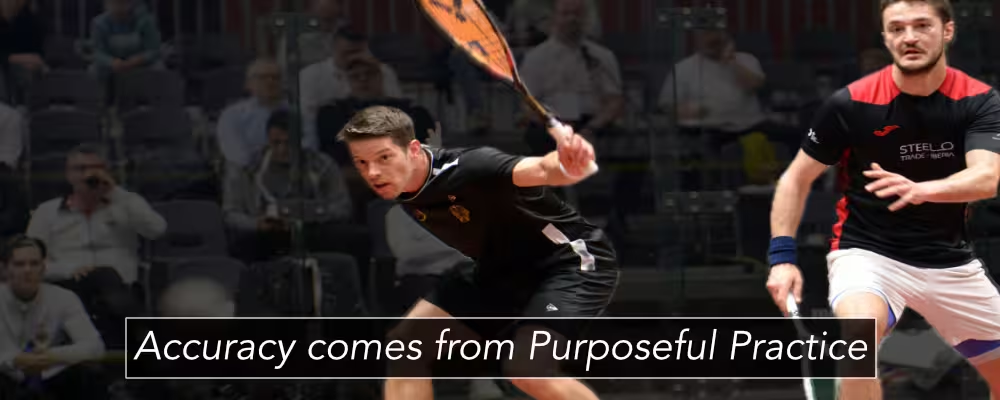
Before I explain each drill, I want to briefly talk about targets. I recommend using targets. However, not everybody responds well to using targets. Over the years, I found some pupils perform worse when using them for two reasons. Firstly, because they focus totally on hitting the target and NOT on swinging well. They adjust everything to simply hit the target, and at first that sounds right, but in the long-term it won't help your squash.
Secondly, some people become disheartened if they don't hit their expected number of shots. This is a personality thing and should be accepted as is. I suggest you try using targets and see how they work for you.
One final point about targets. Smaller is NOT better. Don't think that by using a squash ball box as a target you are challenging yourself more than somebody with a bigger target. Use targets that are big enough you can hit one in every set. Below are three examples of targets for; Foundation, Competitive and Advanced levels. The foundation level is the whole area from the tape to the back wall, and all are one racket length from the side wall.
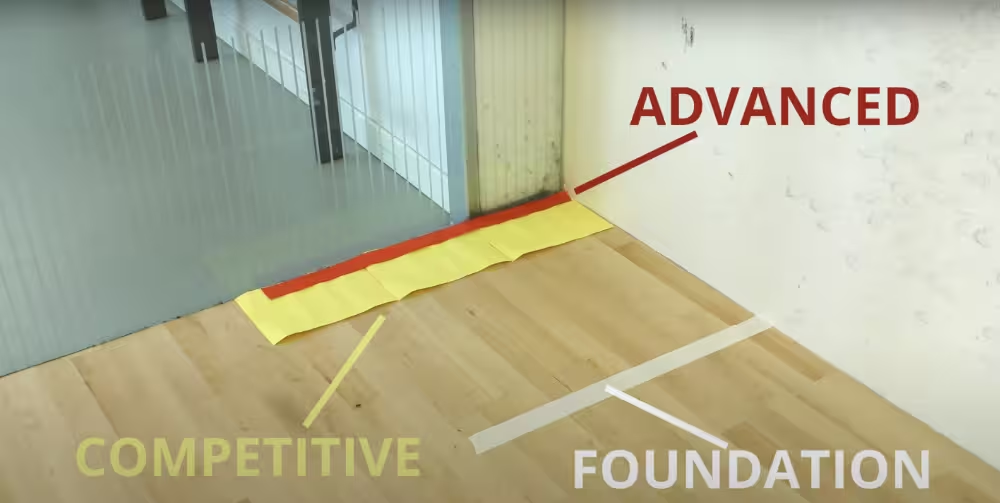
Heat up properly. yes, even for solo drills. You should be sweating BEFORE you hit the ball.
Use the right ball. If you can't keep a double yellow dot ball hot enough, move down to a single yellow. Or even a red dot if necessary.
Please consider wearing squash goggles. Eye injuries in squash a rare, especially in solo drills, but your eyes are too valuable to ever take a chance. By wearing googles during solo drills you allow yourself to become comfortable with them. Anyway, let's get started.
Stand anywhere between the short line and near the backwall. Hold the ball in your hand, throw it in the air and hit it at the front wall before it bounces. if you want to, you can throw it against the side wall or let it bounce first. Use the target ideas shown above and try to hit the ball within your level's area.
If you want to you can stick a small taget on the back wall near the floor too. Your objective is to hit a "second bounce in the nick", but it's more important to hit consistently good shots than lots of terrible ones and then one great one.
Lastly, if you want to, you can hit 3 straight. drives and then try to hit the target area.
Stand between 2 and 3 metres away from the front wall and just like in the previous drill, throw the ball up and hit it into the target aera, shown below. Keep your swing short and make it drop onto the front wall. I pick up the ball with my racket in a kinda of a scope because that's good for your racket control, but you pick it up by hand if you want.

Remember, you are not trying to "kill" the ball in the sense of hitting it hard, you are trying to make your opponent work hard by dragging them forward with such a soft shot. Aim to make your shot hit the side wall as close to the floor as possible, i.e. the nick, but tightness is more important than a nick.
When you think about it, EVERY serve is a dead ball shot! Yes, in a real match you would have been running around and trying to win the point, but here you are calm and relaxed. But, if you can't hit a great serve when you have complete control over everything, it's unlikely you will be able to do it in a match.
I recommend serving backhand on the right side, if you are right handed, because it allows you to flow directly onto the T and keep watching your opponent. But there can be some benefit from serving forehand such as a different angle, but I suggest 80/90% should be backhands.

Keeping score or trying to hit a set number of serves in under a certain time can be fun too.
For those interested, I have created a YouTube Short: Cereal Box Serve Challenge to take your dead ball serve to the next level. I did it in 35 shots, can you beat me?
There are a few different types of boast, and interestingly the modern game seems to be much more variable than 20 years ago when you would define a working boast, a skid boasts, a trickle boast (has regional names) and a three-wall boast. Anyway, back to the "Working Boast". This is also called a two-wall boast because the ball should hit only two walls. Its aim is to "work" your opponent, hence the name. Ideally, it would take its second bounce in the nick, exactly where the targets are, as shown in the image below.
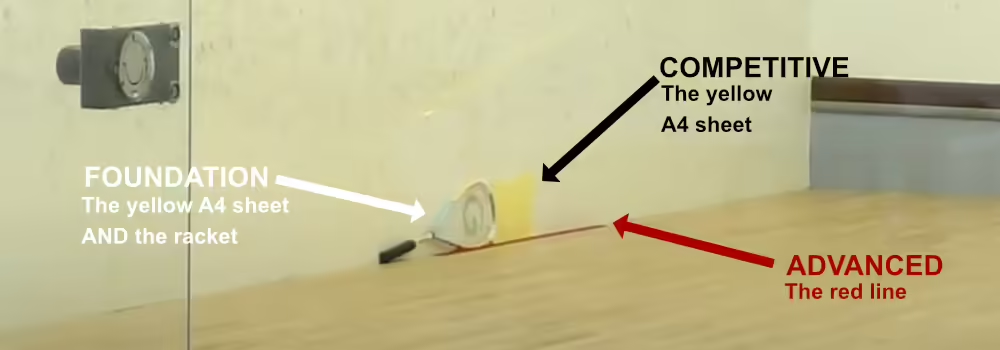
Although the ball comes further back than a three-wall boast, if the three-wall boast doesn't hit the nick it gives your opponent space to hit a return, whereas the two-wall boast causes doubt and hesitation as it gets closer to the side wall. You rarely hit a direct winner from this type of shot, but you often get a weaker return to punish.
Many players rarely get good at this boast because when they practice it during a boast and drive session, their training partner doesn't get back to the T and knows they are going to hit a boast, so when they do hit a good boast, they are not rewarded and therefore the reinforcement of a good shot is lost.
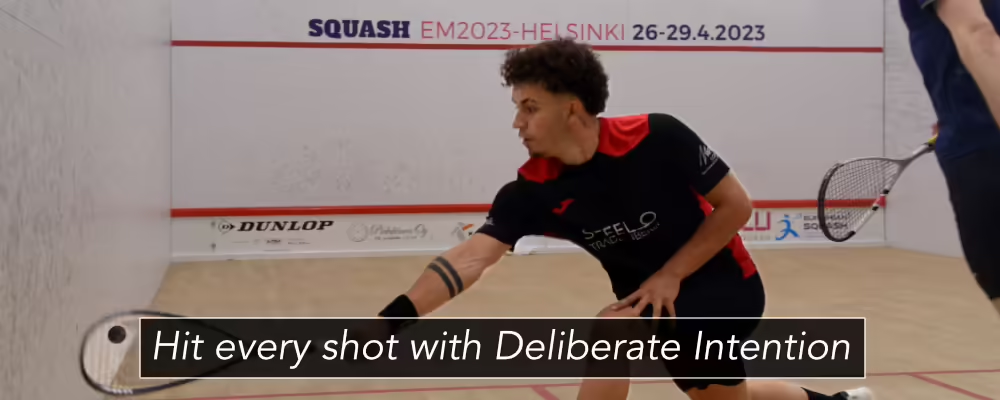
Standing at the back of the court, throw the ball and hit it before it bounces. Aim for your respective target as shown in the image below. The ball travels the furthest in this drill, so even a small change of angle can have dramatic effect. it's one of the reasons that it's considered "lucky" to hit a deep crosscourt nick.
The length of a racket is a very good guide for the maximum height your target should be and as you can see, this decreases the closer you get to the back wall. It works like this because the closer to the back wall your shot hits the wall, the lower it should be otherwise it will bounce off the back wall and be an easy return.
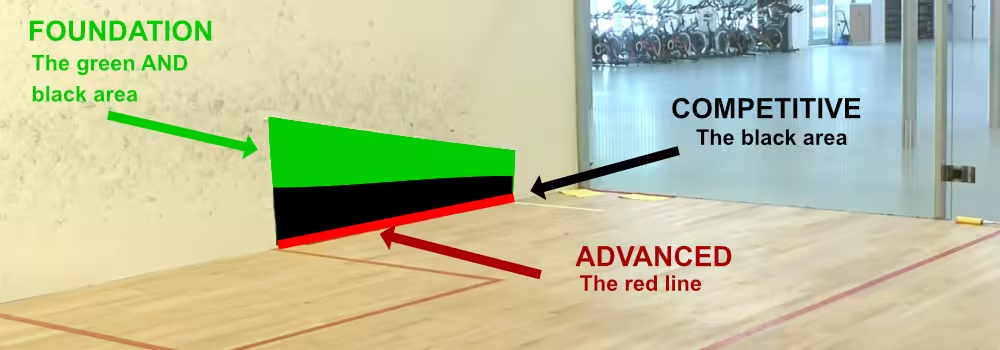
Please note that I am wearing a mask in this video because it was made during the pandemic period and I was required to do so.
At first glance, this type of drill can seem silly, that is until you try it and see it's not as easy as you think. There are so many variables in hitting a squash ball that occasionally limiting yourself will provide an opportunity to see your progress.
I fully accept that you probably won't use the targets i have shown, but honestly even putting a racket against the wall or on the floor is better than nothing.
Keep a note of your hits per session or some other metric if you want to, but simply doing them every now and again will be beneficial. Let me know if you have any questions.